Eye to eye with the bearded vulture
Photographing the biggest bird of the Swiss Alps has always been a big dream of mine. The bearded vulture is an beautiful example of what resettlements and conservation can achieve. This winter I finally had the luck to do so.
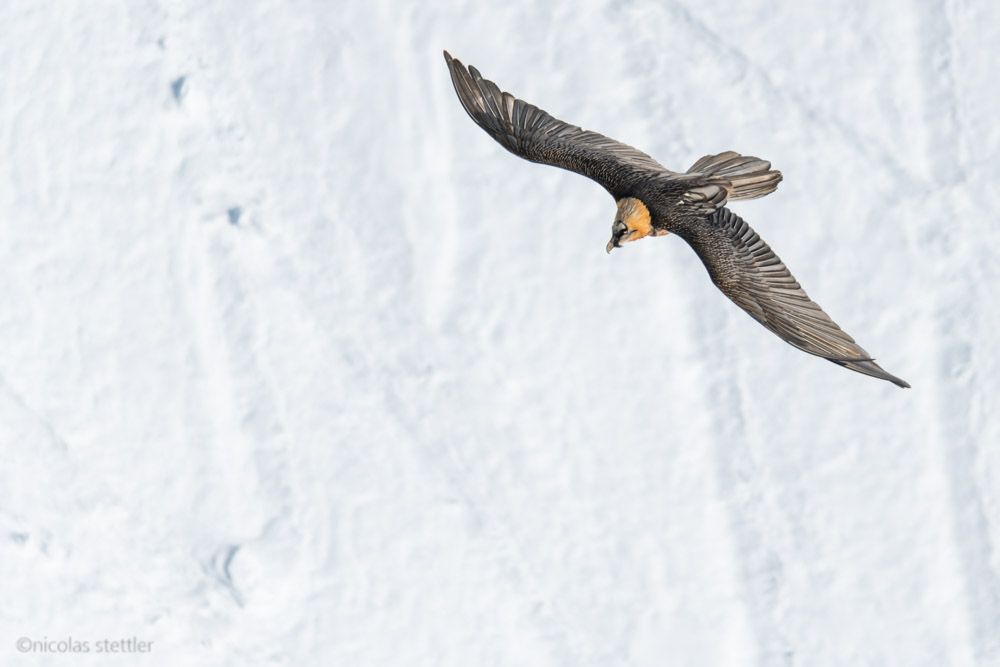
1/2000 | f/ 7.1| ISO 125| 600mm
Bearded vulture (Gypaetus barbatus)
With a wingspan of up to 3 m, the bearded vulture is the largest bird in the Alpine region. It was strongly pursued by man until it got completely extinct in the Alpine region at the beginning of the 20th century. In 1986 the first bearded vulture was released back into the wild in Austria. 1991 followed the first in Switzerland. The reintroduction project has been successful so far and according to the Pro Bartgeier Foundation, the population of bearded vultures has increased to around 250 individuals in the entire Alpine region. However, the project is far from finished. The population has still not fully recovered. A major upcoming problem is the low genetic diversity, which is why bearded vultures still need to be released into the wild. The project of reintroducing the bearded vultures into the wild has been a great success so far and it was about time that I finally got to see a bearded vulture.
A long journey
That morning, the alarm set off at 5.30am. But until I was up at the location, it took another 4 hours. When I finally arrived at the top, a small group of photographers was already standing along the ridge. But they had not yet seen the bearded vulture that morning. Along the ridge was a small group of alpine choughs which were presenting their flying skills in the upwind. I noticed that in each case one alpine chough landed again and again on a protruding stone. It didn't take long until the alpine chough started flying at this stone again, and so I could take my first picture of the day.
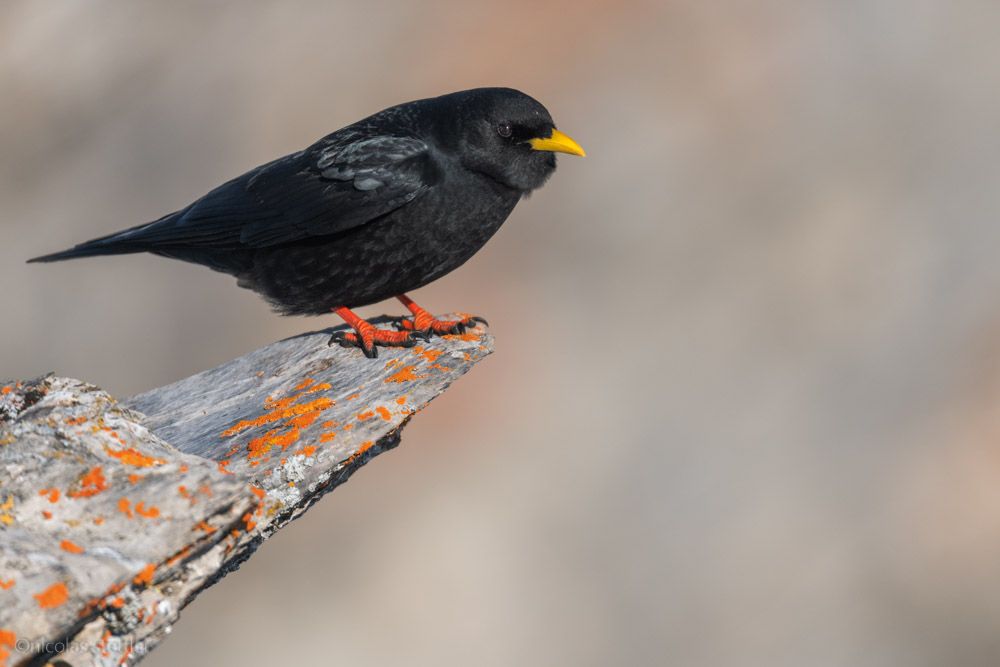
1/1000 | f/ 7.1| ISO 160| 600mm
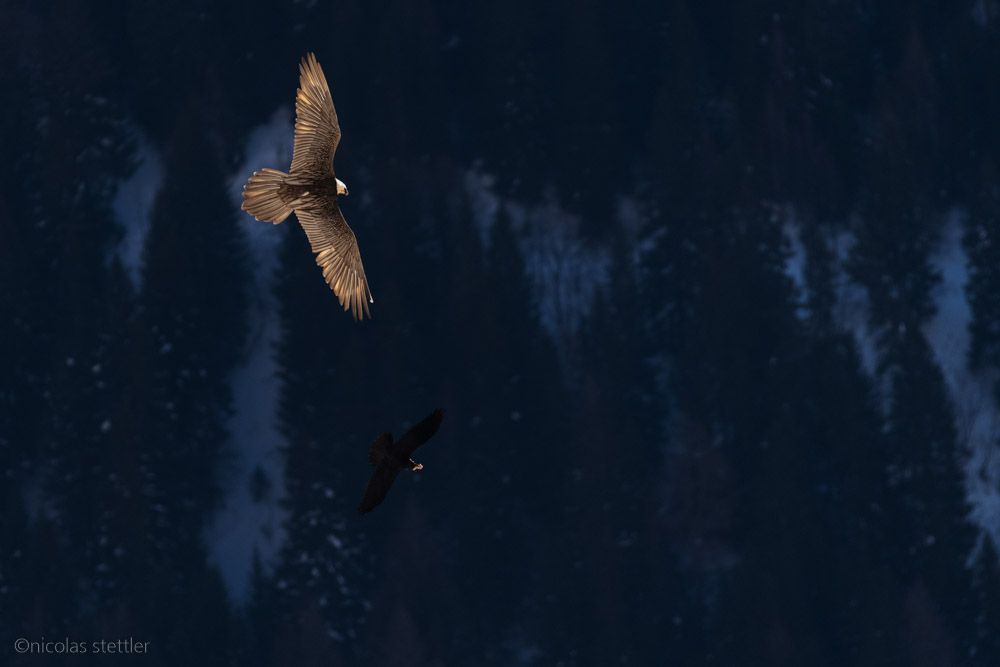
1/1600 | f/ 6.3 | ISO 2200| 600mm
Finally a bearded vulture!
While I tried to take pictures of a flying alpine chough (and failed miserably), the bearded vulture suddenly appeared out of nowhere. Deep down in the valley he flew along the rough terrain when he started slowly spiral its way up. On a ledge he discovered a common raven. With my binoculars I could see that the raven had something to eat in his beak. The bearded vulture plunged into the abyss and started the pursuit. To my surprise, the bearded vulture with its wingspan of nearly 3m was incredibly agile. Unfortunately, the duel took place a little below the ridge and it was a bit too far to photograph. Finally, the raven emerged victorious and as quickly as the bearded vulture appeared, it disappeared again.
Even up here the warm weather showed its effect. In some places the snow had melted completely and two alpine accentors were looking for food on the exposed ground. They were both used to people and especially photographers and I had to move back a few times because the alpine accentors were too close to focus with my telephoto lens.
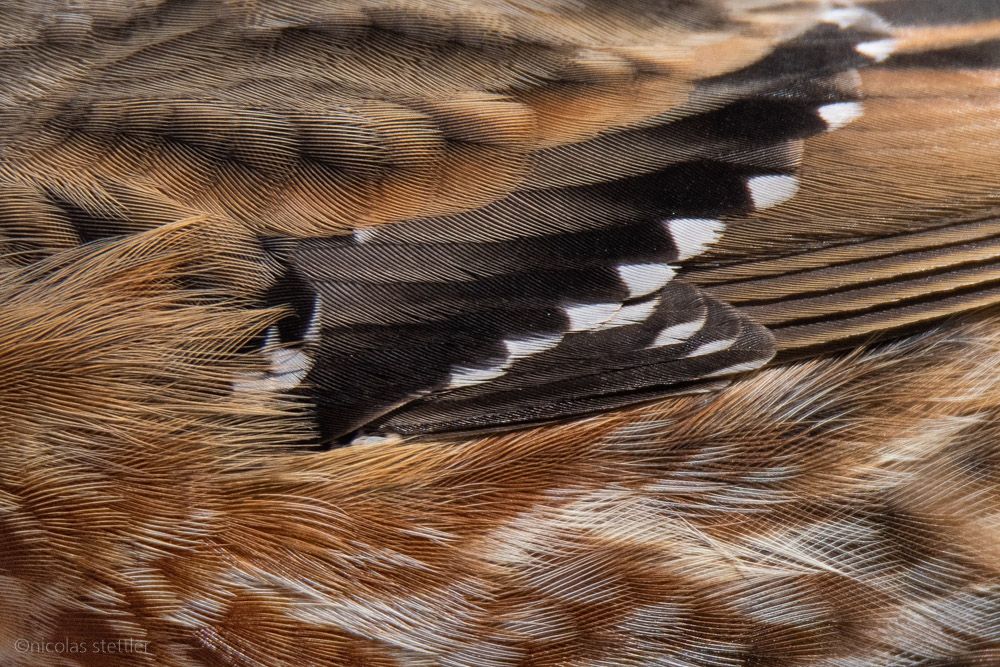
1/2000 | f/ 7.1 | ISO 400 | 600mm
A close encounter
Further down in the valley the bearded vulture showed up again. But this time he let himself be pushed up further. Along the ridge he flew directly towards us. Only a few meters away from us he sailed past us. It was one of those rare moments when I was glad not to have a fixed focal length.
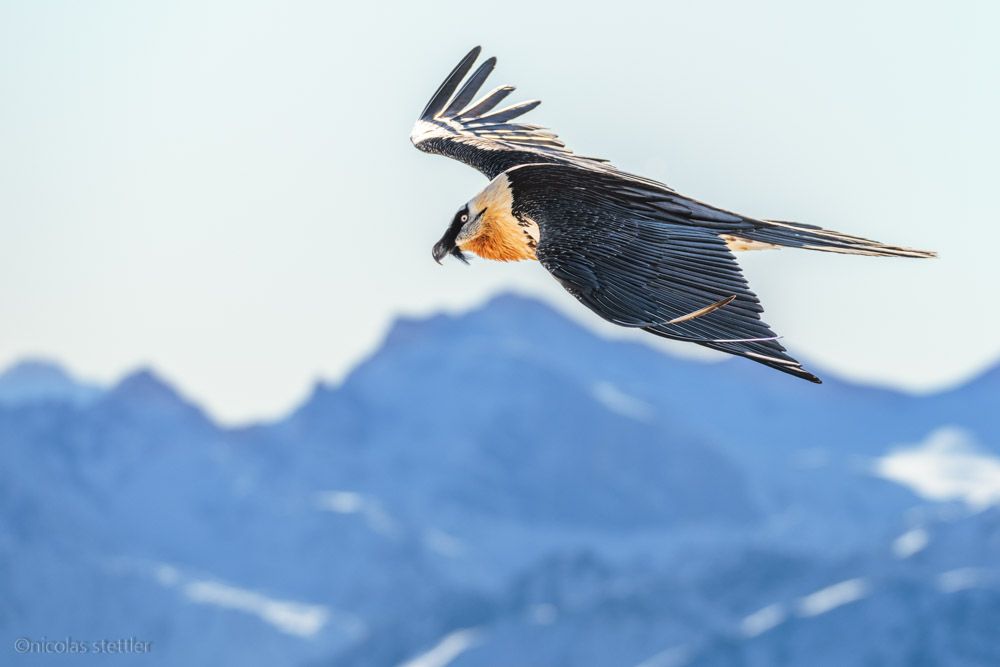
1/2000 | f/ 7.1 | ISO 90 | 270mm
In the meantime, it was time for a lunch. After delicious portion of Älplermagronen a sort of mac’n’cheese, I went back to the ridge. In the afternoon the bearded vulture only showed up once more. Far away 2 golden eagles were circling and a snowfinch landed on the ridge for a short moment. At 16 o'clock the sun disappeared behind a mountain and it was time to go home.
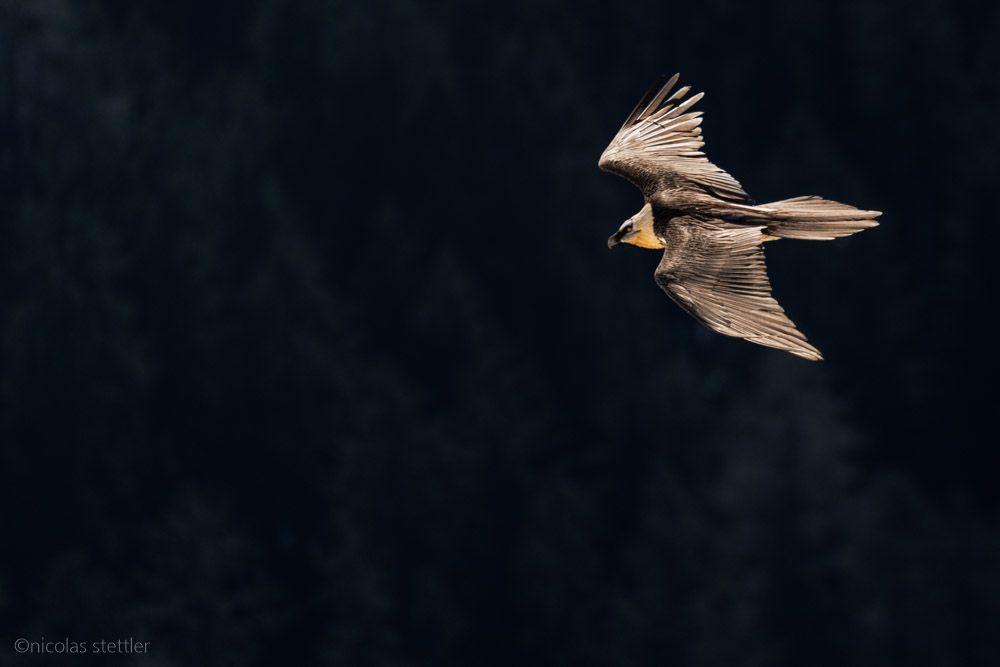
1/2500 | f/ 6.3 | ISO 1600| 270mm

